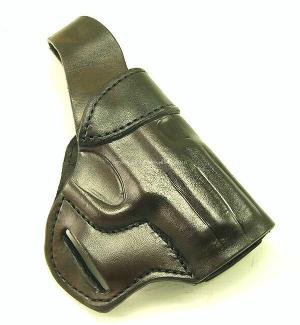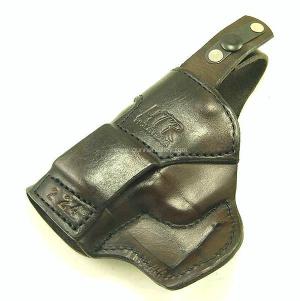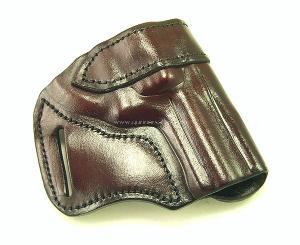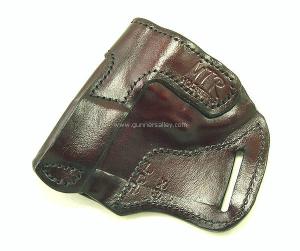There are no products listed under this category.
Shop by Category
- 1911
-
Beretta
- Beretta 20X Bobcat with Threaded Barrel
- Beretta 21A Bobcat
- Beretta 21A with Threaded Barrel
- Beretta 8000, 8040, 8045
- Beretta 9000s
- Beretta 92FS, 96FS, 92D,96D Series no rail
- Beretta 92C and Compact M9A1
- Beretta 92A1, 96A1
- Beretta 92X
- Beretta 92X Compact
- Beretta 92X RDO Compact
- Beretta 92X Centurion
- Beretta M9A1
- Beretta M9A3
- Beretta M9A4
- Beretta APX Fullsize
- Beretta APX Combat
- Beretta APX Centurion
- Beretta APX Compact
- Beretta APX A1 Fullsize
- Beretta APX A1 Full Size Tactical
- Beretta APX A1 Compact
- Beretta APX A1 Compact Tactical
- Beretta APX A1 Carry
- Beretta Nano
- Beretta Pico
- Beretta PX4 Storm 45 Full Size
- Beretta PX4 Storm 9mm, .40 Compact
- Beretta PX4 Storm 9mm, .40 Full Size
- Beretta PX4 Storm 9mm, .40 Sub Compact
- Beretta Tomcat
- Beretta Tomcat with Threaded Barrel
- Beretta-Wilson Combat 92G Brigadier Tactical
- Beretta-Wilson Combat 92G Compact Carry
- Beretta-Wilson Combat 92G Centurion Tactical
- Bersa
- Browning
- Canik
- Colt (non 1911's)
- CZ
- Diamondback Firearms
- FN
-
Glock
- Glock 17
- Glock 17L
- Glock 19, 23, 32
- Glock 20, 21, 20SF and 21SF (Glock Rail only)
- Glock 21SF Picatinny Rail
- Glock 26
- Glock 27
- Glock 22
- Glock 29
- Glock 29SF
- Glock 30
- Glock 30SF
- Glock 30S
- Glock 31
- Glock 33
- Glock 36
- Glock 37, 38, 39
- Glock 42
- Glock 42 with Crimson Trace LaserGuard
- Glock 43 Holster
- Glock 43 with Crimson Trace LaserGuard (LG-443)
- Glock 43 with Streamlight TLR-6
- Glock 48
- Glock 48 with Rail
- Glock 48 MOS
- H&K
- Kahr
- Kel Tec
- Kimber
- Makarov
-
Ruger
- Ruger-57
- Ruger EC9s
- Ruger GP100
- Ruger LC380
- Ruger LC380 with LaserMax CenterFire Laser
- Ruger LC380 with Crimson Trace LaserGuard
- Ruger LC9 Holster
- Ruger LC9 with Crimson Trace LaserGuard
- Ruger LC9 with LaserMax CenterFire Laser
- Ruger LCP
- Ruger LCP with Crimson Trace LaserGuard
- Ruger LCP with Lasermax Centerfire Laser
- Ruger LCP II
- Ruger LCR 38, 357, 22LR, 22 WMR, 9mm
- Ruger LCR 38, 357, 22, 22 WMR with CT Lasergrips
- Ruger LCR-X 2 inch
- Ruger LCR-X 3 Inch
- Ruger P345
- Ruger Security 380
- Ruger Security 9
- Ruger Security 9 Compact
- Ruger SR1911 Fullsize
- Ruger SR1911 Commander
- Ruger SR22
- Ruger SR9, SR40
- Ruger SR9 Compact, SR40 Compact
- Ruger SR45
- Ruger SP101 2.25 inch barrel
- Ruger SP101 3 1/16" Barrel
- Ruger SP101 4.2 holsters
-
Sig Sauer
- Sig Sauer 1911 with 3.25 Inch Barrel
- Sig Sauer 1911 with 3.3 Inch Barrel
- Sig Sauer 1911 with 4.2 Inch Barrel
- Sig Sauer 1911 4.2 Inch Barrel with Rail
- Sig Sauer M11-A1
- Sig Sauer Mosquito
- Sig Sauer P220
- Sig Sauer P220 Compact
- Sig Sauer P224
- Sig Sauer P226
- Sig P6-P225
- Sig Sauer P227
- Sig Sauer P227 Compact
- Sig Sauer P228
- Sig Sauer P229
- Sig Sauer P230, P232
- Sig Sauer P238
- Sig Sauer P238 with Crimson Trace LaserGuard
- Sig Sauer P238 with Factory Sig Laser
- Sig Sauer P239
- Sig Sauer P250 Compact 9mm, .40 cal
- Sig Sauer P250 Sub Compact 9mm, .40 cal
- Sig Sauer P290, P290RS
- Sig P290 or P290RS with Sig Laser
- Sig Sauer P938
- Sig Sauer P938 with Crimson Trace LaserGuard
- Sig Sauer P938 with Factory Sig Laser
- Sig Sauer P320 Full Size
- Sig P320 RX Fullsize
- Sig Sauer P320 Compact
- Sig Sauer P320 RX Compact
- Sig Sauer P320 Sub-Compact
- Sig P320 X-Carry
- Sig P365
- Sig P365 with Safety
- Sig P365 with LIMA365 Laser
- Sig Sauer SP2022
- Sig Sauer SP2340
-
Smith and Wesson
-
Revolvers
- S&W Bodyguard .38 Special
- S&W Governor 2.75 inch barrel
- S&W J Frame 2 or 3 inch barrel
- S&W Model 36 2 or 3 Inch Barrel
- S&W Model 442 2 Inch Barrel
- S&W Model 642 - 2 Inch Barrel
- S&W K Frame 2, 2.5, 3, or 4 inch barrel
- S&W L Frame 2, 2.5, 3, or 4 inch barrel
- S&W N Frame 2, 2.5, 3, or 4 inch barrel Holsters
-
Semi Autos
- S&W 9V, 9VE, 40V, 40VE
- S&W M&P Pro Series 9/40
- S&W Bodyguard .380
- S&W M&P Bodyguard .380
- S&W M&P Compact .45ACP 4.0 inch barrel
- S&W M&P Compact 9mm and .40 cal 3.5 inch barrel
- S&W M&P Full Size .45ACP 4.5 inch barrel
- S&W M&P Full Size 9mm and .40 cal 4.25 inch barrel
- S&W M&P Shield 9mm and .40 cal
- S&W M&P Shield with a Lasermax Centerfire
- S&W M&P Shield with a Crimson Trace LaserGuard
- S&W M&P Shield 45 ACP
- S&W M&P 380 Shield EZ
- S&W SD9VE
- S&W SD40VE
-
Revolvers
-
Springfield
- Springfield 911 380
- Springfield 911 9mm
- Springfield Armory EMP
- XD Sub Compact 9mm, .40 cal 3 inch Barrel
- XD 9mm, .40 cal 4 or 5 inch Barrel
- XD .45ACP 4 or 5 inch Barrel
- XD-M 9mm, .40 cal 3.8 or 4.5 inch Barrel
- XD-M .45ACP 3.8 or 4.5 inch Barrel
- XDs 9mm or 45 ACP 3.3 Barrel
- XDs 9mm with Crimson Trace Lasergrips
- XDs 45 ACP - 3.3 Barrel - Crimson Trace Lasergrips
- XDs 9mm or 45 ACP 4 Inch Barrel
- XDs 9mm/45 ACP 4 Barrel w/Crimson Trace LaserGuard
- Springfield XD Mod.2 Sub Compact 9mm/.40 cal
- Springfield XD Mod.2 Sub Compact 3.3 Inch 45ACP
- Steyr
-
Taurus
- Taurus 327 2"
- Taurus 327 Defender TORO 3"
- Taurus 380 Revolver
- Taurus Judge 3 inch Chamber
- Taurus Model 65
- Taurus Model 66
- Taurus 650 - 2 Inch Barrel
- Taurus 650 - 3 Inch Barrel
- Taurus Model 85
- Taurus Model 605
- Taurus 605 TORO
- Taurus Model 605 Poly Protector
- Taurus Model 856 2"
- Taurus Model 856 Defender 3"
- Taurus 856 Defender TORO 3"
- Taurus 905 2" & 3"
- Taurus 942 2" & 3"
- Taurus Judge Public Defender
- Taurus Judge Public Defender Polymer
- Taurus Millennium G2
- Taurus G2C
- Taurus G2s
- Taurus Millennium Pro - PT111, PT140, PT145
- Taurus PT145 Millennium Pro with rail
- Taurus PT709 Slim and PT740 Slim
- Taurus Millennium PT-745 Pro
- Taurus PT-809
- Taurus Spectrum 380
- Taurus TCP 380
- Taurus TH9 Fullsize
- Taurus TH45
- Taurus TX22
- Walther
- Wilson Combat
Shop by Brand
- 1911
-
Beretta
- Beretta 20X Bobcat with Threaded Barrel
- Beretta 21A Bobcat
- Beretta 21A with Threaded Barrel
- Beretta 8000, 8040, 8045
- Beretta 9000s
- Beretta 92FS, 96FS, 92D,96D Series no rail
- Beretta 92C and Compact M9A1
- Beretta 92A1, 96A1
- Beretta 92X
- Beretta 92X Compact
- Beretta 92X RDO Compact
- Beretta 92X Centurion
- Beretta M9A1
- Beretta M9A3
- Beretta M9A4
- Beretta APX Fullsize
- Beretta APX Combat
- Beretta APX Centurion
- Beretta APX Compact
- Beretta APX A1 Fullsize
- Beretta APX A1 Full Size Tactical
- Beretta APX A1 Compact
- Beretta APX A1 Compact Tactical
- Beretta APX A1 Carry
- Beretta Nano
- Beretta Pico
- Beretta PX4 Storm 45 Full Size
- Beretta PX4 Storm 9mm, .40 Compact
- Beretta PX4 Storm 9mm, .40 Full Size
- Beretta PX4 Storm 9mm, .40 Sub Compact
- Beretta Tomcat
- Beretta Tomcat with Threaded Barrel
- Beretta-Wilson Combat 92G Brigadier Tactical
- Beretta-Wilson Combat 92G Compact Carry
- Beretta-Wilson Combat 92G Centurion Tactical
- Bersa
- Browning
- Canik
- Colt (non 1911's)
- CZ
- Diamondback Firearms
- FN
-
Glock
- Glock 17
- Glock 17L
- Glock 19, 23, 32
- Glock 20, 21, 20SF and 21SF (Glock Rail only)
- Glock 21SF Picatinny Rail
- Glock 26
- Glock 27
- Glock 22
- Glock 29
- Glock 29SF
- Glock 30
- Glock 30SF
- Glock 30S
- Glock 31
- Glock 33
- Glock 36
- Glock 37, 38, 39
- Glock 42
- Glock 42 with Crimson Trace LaserGuard
- Glock 43 Holster
- Glock 43 with Crimson Trace LaserGuard (LG-443)
- Glock 43 with Streamlight TLR-6
- Glock 48
- Glock 48 with Rail
- Glock 48 MOS
- H&K
- Kahr
- Kel Tec
- Kimber
- Makarov
-
Ruger
- Ruger-57
- Ruger EC9s
- Ruger GP100
- Ruger LC380
- Ruger LC380 with LaserMax CenterFire Laser
- Ruger LC380 with Crimson Trace LaserGuard
- Ruger LC9 Holster
- Ruger LC9 with Crimson Trace LaserGuard
- Ruger LC9 with LaserMax CenterFire Laser
- Ruger LCP
- Ruger LCP with Crimson Trace LaserGuard
- Ruger LCP with Lasermax Centerfire Laser
- Ruger LCP II
- Ruger LCR 38, 357, 22LR, 22 WMR, 9mm
- Ruger LCR 38, 357, 22, 22 WMR with CT Lasergrips
- Ruger LCR-X 2 inch
- Ruger LCR-X 3 Inch
- Ruger P345
- Ruger Security 380
- Ruger Security 9
- Ruger Security 9 Compact
- Ruger SR1911 Fullsize
- Ruger SR1911 Commander
- Ruger SR22
- Ruger SR9, SR40
- Ruger SR9 Compact, SR40 Compact
- Ruger SR45
- Ruger SP101 2.25 inch barrel
- Ruger SP101 3 1/16" Barrel
- Ruger SP101 4.2 holsters
-
Sig Sauer
- Sig Sauer 1911 with 3.25 Inch Barrel
- Sig Sauer 1911 with 3.3 Inch Barrel
- Sig Sauer 1911 with 4.2 Inch Barrel
- Sig Sauer 1911 4.2 Inch Barrel with Rail
- Sig Sauer M11-A1
- Sig Sauer Mosquito
- Sig Sauer P220
- Sig Sauer P220 Compact
- Sig Sauer P224
- Sig Sauer P226
- Sig P6-P225
- Sig Sauer P227
- Sig Sauer P227 Compact
- Sig Sauer P228
- Sig Sauer P229
- Sig Sauer P230, P232
- Sig Sauer P238
- Sig Sauer P238 with Crimson Trace LaserGuard
- Sig Sauer P238 with Factory Sig Laser
- Sig Sauer P239
- Sig Sauer P250 Compact 9mm, .40 cal
- Sig Sauer P250 Sub Compact 9mm, .40 cal
- Sig Sauer P290, P290RS
- Sig P290 or P290RS with Sig Laser
- Sig Sauer P938
- Sig Sauer P938 with Crimson Trace LaserGuard
- Sig Sauer P938 with Factory Sig Laser
- Sig Sauer P320 Full Size
- Sig P320 RX Fullsize
- Sig Sauer P320 Compact
- Sig Sauer P320 RX Compact
- Sig Sauer P320 Sub-Compact
- Sig P320 X-Carry
- Sig P365
- Sig P365 with Safety
- Sig P365 with LIMA365 Laser
- Sig Sauer SP2022
- Sig Sauer SP2340
- Smith and Wesson
-
Springfield
- Springfield 911 380
- Springfield 911 9mm
- Springfield Armory EMP
- XD Sub Compact 9mm, .40 cal 3 inch Barrel
- XD 9mm, .40 cal 4 or 5 inch Barrel
- XD .45ACP 4 or 5 inch Barrel
- XD-M 9mm, .40 cal 3.8 or 4.5 inch Barrel
- XD-M .45ACP 3.8 or 4.5 inch Barrel
- XDs 9mm or 45 ACP 3.3 Barrel
- XDs 9mm with Crimson Trace Lasergrips
- XDs 45 ACP - 3.3 Barrel - Crimson Trace Lasergrips
- XDs 9mm or 45 ACP 4 Inch Barrel
- XDs 9mm/45 ACP 4 Barrel w/Crimson Trace LaserGuard
- Springfield XD Mod.2 Sub Compact 9mm/.40 cal
- Springfield XD Mod.2 Sub Compact 3.3 Inch 45ACP
- Steyr
-
Taurus
- Taurus 327 2"
- Taurus 327 Defender TORO 3"
- Taurus 380 Revolver
- Taurus Judge 3 inch Chamber
- Taurus Model 65
- Taurus Model 66
- Taurus 650 - 2 Inch Barrel
- Taurus 650 - 3 Inch Barrel
- Taurus Model 85
- Taurus Model 605
- Taurus 605 TORO
- Taurus Model 605 Poly Protector
- Taurus Model 856 2"
- Taurus Model 856 Defender 3"
- Taurus 856 Defender TORO 3"
- Taurus 905 2" & 3"
- Taurus 942 2" & 3"
- Taurus Judge Public Defender
- Taurus Judge Public Defender Polymer
- Taurus Millennium G2
- Taurus G2C
- Taurus G2s
- Taurus Millennium Pro - PT111, PT140, PT145
- Taurus PT145 Millennium Pro with rail
- Taurus PT709 Slim and PT740 Slim
- Taurus Millennium PT-745 Pro
- Taurus PT-809
- Taurus Spectrum 380
- Taurus TCP 380
- Taurus TH9 Fullsize
- Taurus TH45
- Taurus TX22
- Walther
- Wilson Combat
Shop by Brand
Cross draw Holsters
Cross draw holsters are gun holster models that are designed to be worn in a crossdraw fashion, which is usually on the weak side (non-shooting hand side) of the body with the butt of weapon being positioned so the shooting hand moves across the body to draw the handgun. The cowboys were most likely the first to start carrying in this type of cross draw set-up mostly due to the amount of gear they carried and the fact they spent most of their day mounted on the back of a horse.

Click this link to see all the cross draw holster models that we offer
While the crossdraw style of holster has been a popular choice for both law enforcement and civilian concealed carriers for many years, it’s not without its detractors and criticisms. As with most any holster on the market, this holster style has pros and cons that bear discussing:
Cross Draw Holster Pros & Cons
Cons
Safety – Depending on how the holster is designed, the user can sweep (point the weapon) in an unsafe direction during the draw process as he or she is trying to come on target. If you are a right handed shooter, than you typically sweep the muzzle to the left as you come up on target and lefty shooters sweep to the right.
Retention During a physical altercation – We understand that most CCW holders are not out looking for a physical confrontation while carrying, but the unfortunate truth is, it can and does happen. With a strong side holster, you can initiate some basic retention of the weapon my just locking your shooting hand onto the pistol and moving away from the physical threat. However, with a cross draw style of holster, retention during a physical situation becomes more of a challenge. With a crossdraw model holster, you will have to defend a gun takeaway using your weak side hand, which most likely isn’t as strong as your strong side hand. Also, for a RH shooter, the cross draw model would carry the butt of the weapon in a position so that a right handed assailant standing directly in front of you, would be going for the pistol with his or her strong hand and the pistol is angled for them to simply grab the gun and draw it. Now is that scenario ever going to happen? Probably not, but it’s important to think these thing through when making a holster decision.
Reduced draw speed – While this may or may not be a legitimate issue, it bears discussing. Many professional shooters feel that the overall draw motion and time it takes to get on target from this style of holster is a slower presentation as compared to a strong side holster. Is there truth in that theory? Hard to say for sure, but you won’t see any competitive shooters in IDPA or IPSC running a cross draw holster. Now, the average shooter probably won’t notice the alleged draw speed and presentation issues, but, with practice, one can learn to draw from a cross draw rig pretty darn quick.
Pros
Situational Advantages – By that, we mean that there are certain situations where the cross draw style can be an excellent CCW option. For example, if you spend most of your time behind the wheel of a car or truck, then a cross draw model can be an excellent option, especially if you are a RH shooter. For RH shooters, a crossdraw style holster puts the weapon in a position where it can be easily accessed without any interference from the seat belt. Now, if you’re a LH shooter, then a cross-draw model holster won’t work as well since the seat belt can interfere with the draw. Other situations where a cross draw rig can be advantageous: hunting seated in a blind, while driving or operating heavy equipment in a seated position, etc.
Limited Mobility – Depending on your mobility issues, this could be either a pro or a con. If you have a shoulder mobility issue that keeps you from raising your shoulder in an upward motion than drawing from a crossdraw set-up might be a better option compared to drawing from a strong side holster, But, if your mobility issues for your shooting hand shoulder prevent you from reaching across your body, then a crossdraw holster might not be a good choice.
Now the listed pros and cons are not provided in an effort to deter you from or suggest that you should not purchase a cross draw style holster, but to help you make an educated buying decision.
Cross draw models are produced in variations where the holster is worn on the belt or inside the waistband. Models worn inside the waistband are typically labeled as IWB crossdraw holsters. Some crossdraw models come standard with a thumb break, while others are basic open top models. If you have concerns about the weapon retention on an open top cross draw holster due to the cant angle, then consider getting one with a thumb break.
Common FAQS
Here are some commonly asked questions that we see regarding cross draw holster models:
I'm really interested in a crossdraw style of holster, but I'm concerned about the handgun retention. I see that you mentioned that some cross draw models have a thumb break or retention strap for added retention? Can you talk more about that as I'm not unclear of what a thumb break is?
A thumb break (or retention strap) is a strap that is built in into the holster and snaps in over the weapon. The thumb break helps keep the pistol or revolver in the holster until it's needed. To draw from a cross draw model holster with a thumb break (or really any holster with a thumb break), the shooter has to unsnap the thumb break before starting the draw or the weapon won't come out of the holster. We understand that sounds confusing so here's are images that might help.
 |
 |
| Cross Draw Styled Holster with Thumb Break - Front | Cross draw Styled Holster with Retention Strap - Rear |
Do carry any cross draw IWB holsters? I'm looking for a cross draw holster that is worn inside the belt?
Currently, all the crossdraw models that we carry are OWB only. We don't currently carry any crossdraw IWB holster models.
All the pictures or images on your site seem to show cross draw models for semi-automatic handguns only? Do you offer any crossdraw models for a revolver? If so, can you please show a picture of one?
We carry and offer cross-draw models that are made to fit a variety of popular revolver models. Here's a sample picture of a cross draw model made for a Ruger LCRX 3".
 |
 |
| Crossdraw Model for a Ruger LCRX 3" - Front | Crossdraw Model for a Ruger LCRX 3" - Rear |
I have a Glock 23 with a Streamlight TLR-2 HL mounted to it. Do you carry a crossdraw model that will fit that Glock model with the Streamlight light mounted to it?
The MTR Custom Crossdraw model listed below is available in a configuration to fit your G23 with that Streamlight TLR-2 HL attached. MTR can actually support a large number of popular pistol models with various mainstream lights or lasers mounted to them.
Cross draw holster models that we carry are listed below.

